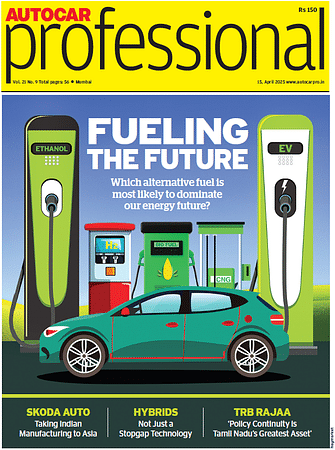Nissan Bets Big on India with €700M Investment, 6 New Models — But Will Renault’s Control of Manufacturing Limit Its Ambitions?
The company has set itself a very tall target of producing and selling 2 lakh units by the end of the next calendar year – with 1 lakh units aimed for the domestic market and 1 lakh for export.
Nissan Motor Company has outlined ambitious plans for its Indian business, including six new models, €700 million in investments, and a target to double its sales volume to 2 lakh units by 2026.
Having endured with one model, Magnite, the company believes it has the momentum it needs to take a more significant step in the growing Indian market and contribute to its global revival strategy, albeit with minimal stakes on the ground.
However, just as it sets these ambitious goals, Nissan has taken a surprising step: exiting its ownership of the manufacturing joint venture in India.
The company has sold its 51% stake in Renault Nissan Automotive India Pvt Ltd (RNAIPL)—its primary manufacturing base in Chennai—to Renault, giving the French automaker 100% control.
While Nissan insists that its future product roadmap remains unaffected, the shift raises key questions about operational independence and long-term manufacturing security.
New Models, Bigger Ambitions
FY2025 closed on a high note for Nissan India, with 99,000 units sold, including 71,000 exports and 28,000 domestic sales, mainly driven by the Magnite.
The brand now plans to launch six new models: two C-segment SUVs, a B-segment SUV, an EV, and new Magnite variants, in addition to the X-Trail that has already been unveiled.
“We are on track,” Frank Torres, Divisional Vice President of AMIEO Region Business Transformation & President of Nissan India Operations, assured despite the stake sale. “Our investments are intact, our network is growing, and our future models are aligning with our aspiration to triple our volumes.”
But the underlying structure supporting these plans is now very different.
Of €700 million, Nissan Motor India has already invested over €600 million in new product plans that will hit the roads soon.
The company is hopeful that, with an expanded network, it will be able to participate in the growing SUV segment which is already witnessing high intensity.
Out of the Factory They Once Owned
Renault will now manufacture all Nissan vehicles under a contract model—a reversal of roles from the earlier alliance structure, where Nissan held a majority in RNAIPL.
“This move helps us convert fixed costs into variable costs,” Torres said. “We will now pay per vehicle. It gives flexibility and allows us to free up cash for future investments.
However, relinquishing control of the plant also means Nissan has lost direct influence over capacity, operational decisions, and workforce management.
All manufacturing-related decisions, whether scaling capacity, adding shifts, or allocating production between Renault and Nissan models, will now be made by Renault.
Torres maintained that Nissan has secured capacity for all its planned models through 2032 but acknowledged that any future expansion would depend on mutual agreement.
“From now on, RNAIPL is a supplier to Nissan,” he said.
R&D Stays, But Power Dynamics Shift
Nissan will retain its 49% stake in the R&D and digital hub RNTBCI, which it says will continue to play a crucial role in developing India-focused and global models.
Employment levels at RNAIPL (approx. 6,300 workers) will remain unchanged under Renault ownership, at least in the near term.
But the broader picture is clear: Nissan is no longer in control of its production infrastructure in India—a risky tradeoff in a market known for fast-moving competition and cost sensitivity.
Is Flexibility Enough?
Nissan insists the restructuring supports its turnaround plan by reducing fixed costs and improving agility.
However, with so much riding on a limited product portfolio and shared infrastructure, market experts may wonder whether Nissan has sacrificed too much control for near-term efficiency, making them question its commitment to the local market.
There is also the question of prioritization: If both Renault and Nissan face capacity constraints in the future, whose models will be prioritized for production first?
Torres said that future requirements would be discussed in good faith, but the power to decide now lies solely with Renault.
In a market where localization, speed, and supply chain control are often key to success, Nissan’s dependence on a partner-controlled factory could become a strategic vulnerability.
For now, however, Nissan is moving forward with confidence. “The results we’ve seen this year confirm that our investment in India is paying off,” Torres said. “Our plans remain unchanged.”
Unchanged, yes—but no longer fully in Nissan’s hands.
RELATED ARTICLES
Hyundai's i10 Surpasses 3 Million Sales, Maintaining Steady Domestic and Export Growth
The automotive brand has sold over 2 million units in India and exported 1.3 million units to more than 140 countries gl...
Mahindra Phases Out Convertible Top Variants of the Thar
The Mahindra Thar line-up has shrunk, as bookings for 8 variants have been stopped.
MG to Launch Windsor EV with Larger Battery Next Month
The first update on Windsor will arrive in just 8 months of it going on sale in India.






 31 Mar 2025
31 Mar 2025
 19164 Views
19164 Views





 Shruti Shiraguppi
Shruti Shiraguppi


 Autocar India
Autocar India


